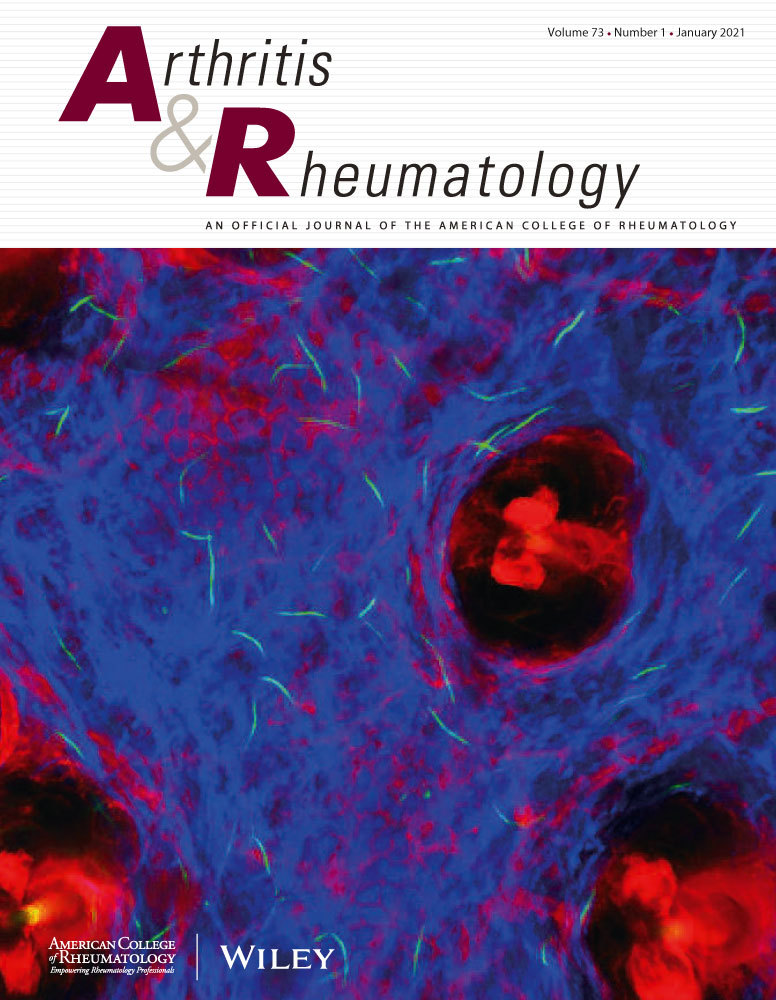种族、民族和历史背景对银屑病负担和临床结局的影响
IF 10.9
1区 医学
Q1 RHEUMATOLOGY
引用次数: 0
摘要
目的评价银屑病关节炎(PsA)患者不同种族和民族亚群邻里剥夺和结构性障碍与疾病负担的关系。方法对ACR RISE登记的具有种族、地区和≥3年随访的spsa患者进行评估。人口因素、疾病活动措施、由区域剥夺指数(ADI)定义的社会剥夺和治疗剂按种族分层。进行亚组分析,以检查住宅业主贷款公司(HOLC)根据投资风险从“最佳”(HOLC 1 -主要是白人居民)到“危险”(HOLC 4或红线-主要是黑人居民)分级的住宅区的人口统计学和临床特征。结果该队列包括21429例PsA患者,主要为女性(57.7%),肥胖(56.1%),BMI为30,中位年龄为55岁(12.8)。黑人患者普遍存在高度社会剥夺(25.7%对2.3%亚洲人,12.5%白人和17.3%其他),疾病活动性高(HDA, 40.2%对25.8%亚洲人,29.6%白人和33.5%其他)。大约7%的PsA患者生活在holc分级区。与HOLC 1区相比,HOLC 4区患者中吸烟、肥胖、高度社会剥夺、联邦保险和HDA更为普遍。HOLC 4患者的HDA中位[IQR]期也更长(105.0[0,690]人日),缓解期更短(1.0[0,5457]人日)。结论美国黑人PsA患者HDA普遍存在,社会剥夺程度高。此外,结构性种族主义的持久影响似乎对生活在历史上红线地区的患者的PsA疾病特征产生负面影响。本文章由计算机程序翻译,如有差异,请以英文原文为准。
The Influence of Race, Ethnicity and Historical Redlining on Psoriatic Disease Burden and Clinical Outcomes.
OBJECTIVE
To evaluate the association of neighborhood deprivation and structural barriers with disease burden in racial and ethnic subsets of patients with psoriatic arthritis (PsA).
METHODS
PsA patients in the ACR RISE registry with reported race, region, and ≥3 years of follow-up, were evaluated. Demographic factors, disease activity measures, social deprivation, defined by the area deprivation index (ADI) and therapeutic agents were stratified by race. Subgroup analyses were conducted to examine demographic and clinical characteristics across residential areas graded by the Home Owners' Loan Corporation (HOLC), from 'Best' (HOLC 1 - predominantly White residents) to 'Hazardous' (HOLC 4 or redlined - predominantly Black residents) based on investment risk.
RESULTS
The cohort included 21,429 predominantly female (57.7%), obese (56.1% BMI>30) PsA patients with median age 55 (12.8) years. High social deprivation was prevalent among Black patients (25.7 % vs. 2.3% Asian, 12.5% White and 17.3% Other), as was High Disease Activity (HDA, 40.2% vs. 25.8% Asian, 29.6% White, and 33.5% Other). Approximately 7% of PsA patients lived in HOLC-graded districts. Smoking, obesity, high social deprivation, federal insurance and HDA were more prevalent in patients in HOLC 4 areas compared to HOLC 1 areas. HOLC 4 patients also had longer median [IQR] periods of HDA (105.0 [0, 690] person-days) and fewer days in remission (1.0 [0, 5457] person-days).
CONCLUSION
In the US, Black PsA patients have prevalent HDA and high social deprivation. Additionally, the enduring effects of structural racism appear to negatively influence PsA disease characteristics of patients living in historically redlined areas.
求助全文
通过发布文献求助,成功后即可免费获取论文全文。
去求助
来源期刊

Arthritis & Rheumatology
RHEUMATOLOGY-
CiteScore
20.90
自引率
3.00%
发文量
371
期刊介绍:
Arthritis & Rheumatology is the official journal of the American College of Rheumatology and focuses on the natural history, pathophysiology, treatment, and outcome of rheumatic diseases. It is a peer-reviewed publication that aims to provide the highest quality basic and clinical research in this field. The journal covers a wide range of investigative areas and also includes review articles, editorials, and educational material for researchers and clinicians. Being recognized as a leading research journal in rheumatology, Arthritis & Rheumatology serves the global community of rheumatology investigators and clinicians.
 求助内容:
求助内容: 应助结果提醒方式:
应助结果提醒方式:


